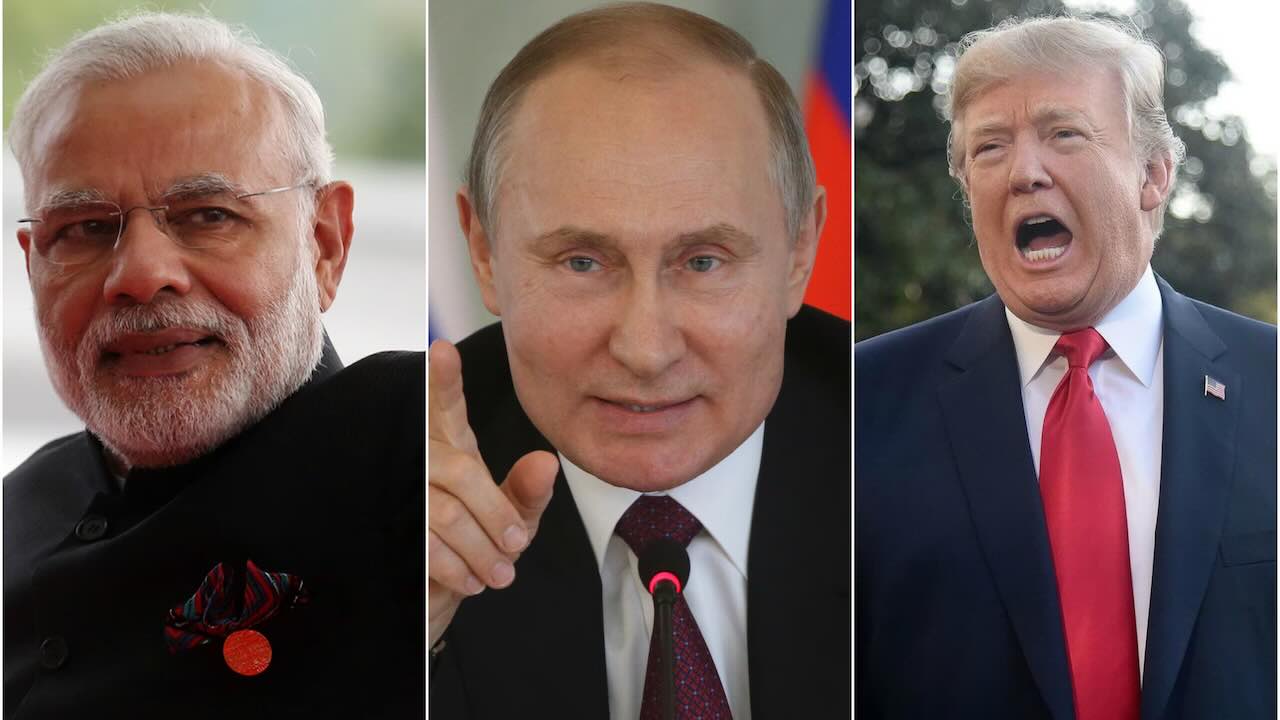US President Donald Trump forgets the basic reasons for the conflict between Russia-Ukraine and India-Pakistan. And every time he gives the concerned parties the trade rattle. The question is whether Trump can stop the conflict between the two countries by ignoring the real issues and using trade as a shield and even if he can, then for how long?
In Trump’s politics, in Brand Trump’s strategy, trade is a tool that can solve any geopolitical problem in the world. He believes that countries can be forced to change their policies through economic pressure (tariffs, sanctions, or trade agreements). Citing trade, Trump has asked Putin and Zelensky to stop the Russia-Ukraine war. He gave a similar argument to India when he said that if India stops the war, America will do a lot of trade with them.
But in doing so, Trump forgets the basic reasons for the conflict between Russia-Ukraine and India-Pakistan. The question is whether Trump can stop the conflict between the two countries by ignoring the real issues and using trade as a shield and even if he can, for how long.
Quick Links
What is the India-Pakistan case?
India’s main issue with Pakistan is terrorism. Apart from this, trust restoration is also necessary to end the historical hostility between India and Pakistan. Pakistan, on the other hand, considers Kashmir as its main issue with India.
It is surprising that Trump wants to resolve such historical and geopolitical issues through trade.
As far as Jammu and Kashmir is concerned, India considers it a purely bilateral issue, that is, India allows only Pakistan to interfere in this issue. Apart from this, India has clearly stated many times that if there will be any talks with Pakistan on the Kashmir issue, then it will be on taking back Pakistan-occupied Kashmir.
In 2019, Trump had offered to mediate on Jammu and Kashmir, but India immediately rejected Trump’s claim.
During Operation Sindoor, US President Trump said that after a long mediation by America between India and Pakistan, both the countries have agreed on a complete ceasefire.
After this, Trump said that he is happy after India and Pakistan ended a dangerous tension. Trump said that he will do a lot of trade with both the countries. Trump then said, “We are going to do a lot of trade, you guys stop this fight, if you stop it then we will trade, if you don’t stop it then we will not trade.”
In a speech, Trump himself said that no one else has used trade the way he is using it. Trump said that India-Pakistan have stopped the war for many reasons but trade is a big reason for it. We are going to trade with India, we are going to trade with Pakistan.
It is important to understand here that Trump did not say anything about terrorism, which is the root cause of tension from India’s point of view. Hence, Trump’s trade-centric strategy does not address these deeper issues (such as terrorism). If Pakistan again adopts the policy of terrorism against India, then the peace created between the two nations is unlikely to last long.
Apart from this, Trump once again offered mediation to resolve the Kashmir issue. India firmly rejected this offer and called it a bilateral issue.
What is the case of Russia-Ukraine?
Trump has used trade and personal diplomacy as tools to resolve the Russia-Ukraine war. But here too, the US President seems incapable of addressing the issue of concern to Russian President Putin and seems to be playing the trade card.
In Putin’s view, he had to send the army to Ukraine because on the pretext of Ukraine, NATO (North Atlantic Treaty Organization), an organization of 32 powerful countries of the world, had become a burden on Russia.
Ukraine also wants to ensure its security by joining NATO, which can help it in its conflict with Russia. But Putin is strongly against this idea. NATO feels that by getting Russia’s neighbor Ukraine a NATO member, they can hold Putin by the throat, they can show their influence in the entire region, while NATO coming so close to his border makes Putin feel insecure. This is the reason for the Ukraine-Russia war.
After winning the US presidential election, Donald Trump has spoken to Putin several times to end this war. He has also spoken to Ukraine’s President Zelensky. Despite this, Trump is unable to make any concrete promise to Putin on the issue of NATO.
On Monday, Trump said that he had talked to Putin for 120 minutes and after that Putin and Zelensky agreed to talk towards a ceasefire. Trump considers this a good development, but the irony is that he also considers the trade factor responsible for this dialogue reaching this level.
The US President claimed that when this war is over, Russia wants to trade with America on a large scale. And he seems to agree with this. He said that Russia has a huge potential to create jobs and earn money. He described Russia’s potential to trade as unlimited.
After this, while talking about Zelensky, he said that trade can benefit Ukraine a lot and in this process Ukraine can also be rebuilt.
Sanctions did not harm Russia at all
It is worth noting that during the Ukraine war, the US had also imposed several trade and economic sanctions on Russia. But Russia earned $180 billion from oil exports until 2024, which enabled it to continue the war despite Western sanctions. Trump’s trade-focused strategy failed to change Putin’s military and strategic priorities, as Russia reduced economic pressure by increasing trade with countries like China and India.
The problem is that Trump’s talk of trade concessions ignores the root causes of the war (such as Ukraine’s sovereignty and Russia’s security concerns).
In fact, trade has its limitations as a tool to solve geopolitical problems. There is no point in talking about increasing trade between India and Pakistan unless there is agreement on issues like terrorism and border tensions. Similarly, economic pressure does not work on Russia because it finds trade routes with other countries (such as China and India).
This policy of Trump can provide short-term economic pressure or concessions, but fails to solve deeper and complex issues. Linking India-Pakistan tensions to trade or talking about preventing war by giving economic incentives to Russia are superficial solutions. To prevent long-term wars and tensions, diplomacy, trust building, regional cooperation and change in attitude are needed more than trade.







